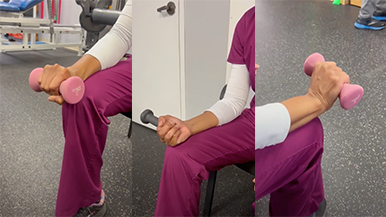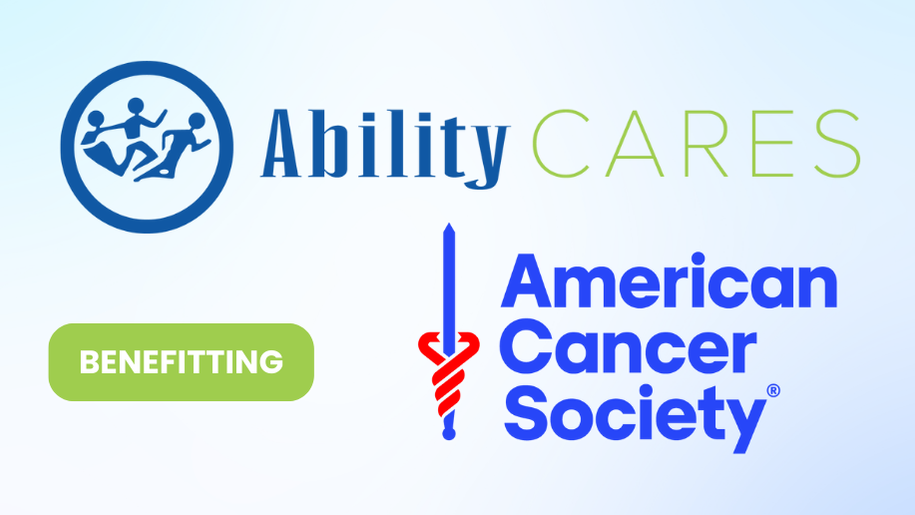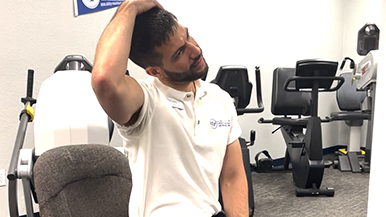Your 7 Step Bike Ride Checklist
Taking a few precautions can make your ride more enjoyable and safer! Jason Taormina, a physical therapist assistant at Ability Rehabilitation, shares seven things you should check before you set out on that early morning, late afternoon, or evening bike ride.
1. Seat Height and Angle
If your seat is too low or too high, it will not be mechanically efficient. Too low, and it will place too much stress on your knees and back. Too high, and it forces you to tilt side to side as you peddle. When you sit on your bike seat with your foot on the peddle in the down position (think 6 o’clock), your knee should have a slight bend of about 20-30 degrees.
“Your seat post height is going to ensure that when you’re on the bike, you can extend your leg, bring it down and keep a soft bend to the knee,” says Jason. “You don’t want your leg fully extended, and you also don’t want it in too much knee flexion.”
Seat angle tweaks are a personal preference, based on comfort. In general, your seat angle should be fairly level, plus or minus a few degrees. A seat that tilts upward in the front will compress soft tissue and nerves, while a seat that tilts downward in the front can put excess pressure on the wrists and hands.
2. Check Tire Pressure
Low tire pressure makes it harder to pedal and can lead to a pinched tube. The sidewall of your tire will have the maximum pressure, so ideally set it a few PSI below max. While you’re at it, make sure you have a spare tube and the necessary tools to fix a flat while on your ride!
Most standard bike valves are called Schrader valves and are easily accessible with any home pump or pumps at a gas station. “Make sure that you fill the tire up to whatever manufacturer spec it says on the tire, and you can typically find that on the sidewall tire,” says Jason. “You want to make sure that your tire pump has a gauge on it so whatever you’re using, you can bring it up to the specified PSI. Don’t over-inflate your tires.”
3. Stay Hydrated
“With any outdoor physical activity, especially in the Florida heat, make sure you drink lots of water and stay hydrated,” says Jason.
Riding in the heat can cause dehydration in less than 30 minutes, so drink frequently. Whether you use a backpack style hydration pack or water bottle(s), make sure you have enough water for your planned trip
4. Clothing
You may or may not like bike shorts, but they serve a purpose when on a ride. They provide compression and comfort, as well as preventing chafing and rashes. If possible, wear clothing with bright colors to make yourself more visible.
“You want to make sure the clothing you wear is going to make you visible to other cyclists and oncoming traffic,” says Jason. “Bright colors or anything reflective is great. Anything with reflective paneling or stripes on it is going to be fantastic for anyone who rides near sunrise or sundown when visibility is low.”
5. Be Visible
According to Jason, another vital tip for bike safety is visibility. Make sure you have reflectors on the front, rear, and pedals. It is best practice to have a light on the back of your bike, at a minimum, and also on the front, in case you get caught out at dusk.
“You can add lighting to your bicycle to make you more visible to other cyclists and oncoming traffic,” says Jason. “You have a couple of different options in the front. Small lights can change to different flashing patterns. Solid to different strobe patterns can keep you more visible as well as a headlight for those of you that plan to ride at night. And in the rear of the bicycle some red rear facing light that can either stay solid red or strobe to make you visible to other cyclists and motor vehicles behind you.”
6. Wear a Helmet

“When you place the helmet on your head, you want it to sit comfortably, about one to two fingers above your brow line,” says Jason. “The next thing is the length of your strap – you want it to come down and form a V just below your earlobe. And lastly is the length of your chinstrap – as you buckle it, you want to be able to comfortably fit about two fingers between your chin and the strap to ensure that it’s not too tight underneath your chin.”
7. Listen to your body
Cycling is great exercise, in part because it unloads your joints and avoids the pounding of some other forms of exercise. Your legs do a lot of work and will feel the burn and resulting stiffness, but you should not feel pain in your joints. If you experience joint pain, especially neck, back, knee, or wrist pain, consider having a professional evaluate your injury and bike fit.
The answer to most aches and pains is rarely just in one area (bike fit or bodywork), and a combined approach will usually work best for alleviating pain and getting the most out of your ride.
What an ache tells you:
- It’s the first clue your body is telling you something is wrong
- Your body has an amazing capacity to accommodate the ache and adjust
- When your body accommodates to your ache, weakness, and lack of flexibility set in – but over time, something will break down
- Listening to your body and addressing problems early is the key to preventing injury
- Once you have a breakdown, the pain will force you out of your activity
How physical therapy can help prevent sports injuries:
- Modify exercise routines when you have a minor ache and pain
- Get assessed for weakness and flexibility issues to address biomechanical deficits
- Educate on faulty or improper posture or body mechanics during exercise
- Educate and help with technique on flexibility exercises
- Correct muscle imbalances through both flexibility and strength training
- Alleviate pain
- Correct improper movement patterns
Let Ability Rehabilitation help keep you safely riding on the right road. Be aware, be proactive, and get help before your pain turns into an injury.
Common cycling-related pain and injuries that we treat:
- Low back pain
- Neck pain
- Foot numbness



